Head-to-Head: 2022 Honda CR-V Hybrid vs Toyota RAV4 Hybrid
Similar on paper, one of the SUVs in this 2022 CR-V Hybrid vs RAV4 Hybrid comparison emerges the clear winner by acing the age-old formula of more for less.
The CR-V Hybrid vs RAV4 Hybrid

There’s a reason you’ll find both vehicles in this Honda CR-V Hybrid vs. Toyota RAV4 Hybrid comparison on our list of Best Compact SUVs – they’re both highly engineered SUVs from their respective automakers, Honda and Toyota. These well-known, and high selling, small crossovers have been duking it out for decades – both were introduced in the mid-90s – and in the process have earned a reputation for high quality and strong reliability.
Today, the CR-V and RAV4 have virtually identical footprints – the Toyota is one inch longer – and offer very similar hybrid-powered models that we’ll look at in today’s review. Those interested in even more efficiency can check out the plug-in RAV4 – something Honda does not offer.
You can learn more about the differences in these electrification strategies with this explainer article. While the variances between these two SUVs may be hard to spot at a glance, one of them steps up with more value and higher content as the clear winner.
CR-V Hybrid vs RAV4 Hybrid Specs
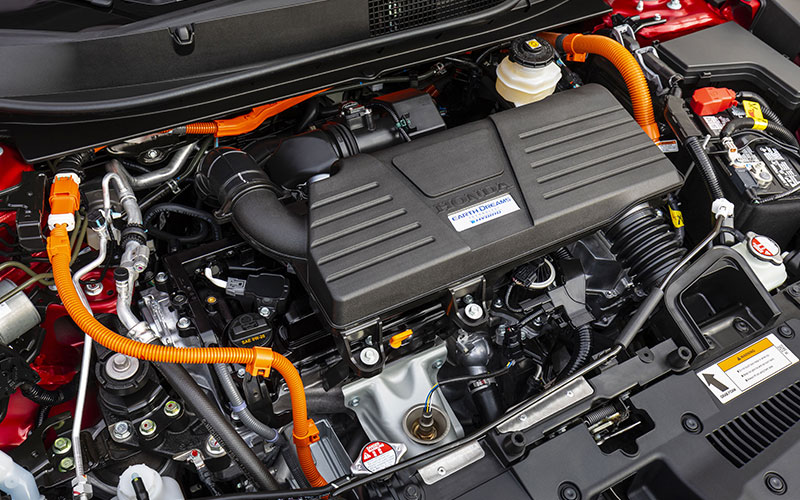
Reviewing the specifications in a 2022 CR-V Hybrid vs. RAV4 Hybrid comparison, you’ll find a lot of similarities. Both Honda and Toyota blend a naturally aspirated four-cylinder internal combustion engine with a pair of electric motors – one up front, one out back – and a Lithium-Ion or Nickel-Metal Hydride battery pack to drive all four wheels.
Honda goes with a 2.0L gas engine, while the Toyota mill displaces 2.5 liters. The former combines electric motors to generate 212 hp, while the latter makes a wee bit more at 219 horses overall.
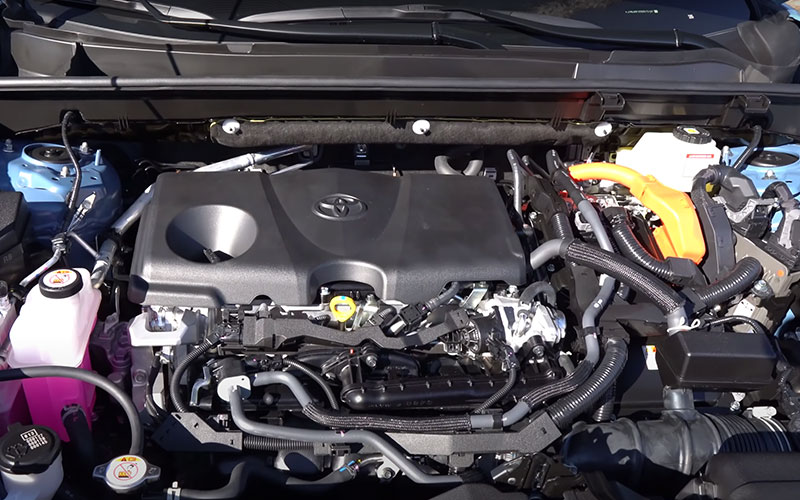
Both trucklets are running continuously variable transmissions and feature adjustable regenerative braking to slow down SUVs that each weigh in at right around 3,700 pounds. IIHS and NHTSA award their top ratings to both the 2022 Honda CR-V and 2022 Toyota RAV4, they each stand eight inches off the ground, and share warranty terms on the powertrain of five years or 60,000 miles.
The 2022 Toyota RAV4 Hybrid noses ahead here with a 10-year/150,000-mile warranty on the hybrid battery to Honda’s 8-year/100,000-mile coverage. You will also get two years of complimentary factory-scheduled maintenance with the RAV4 Hybrid, something Honda does not offer.
Driving and Performance
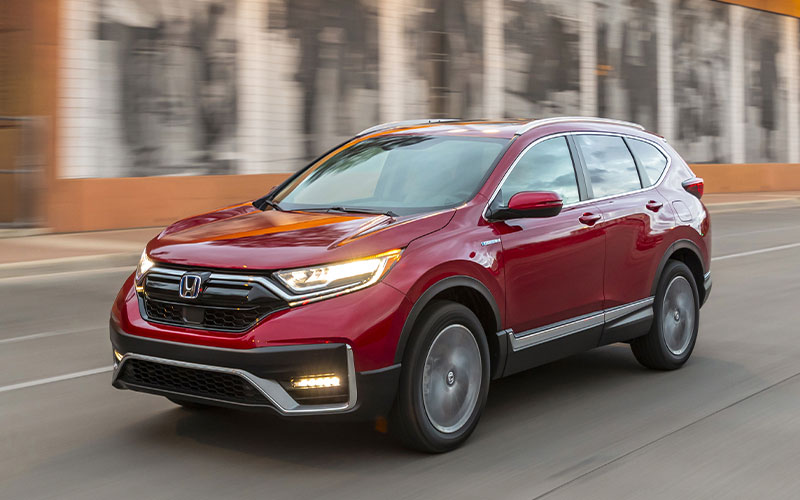
The similarities continue on the driving front, as both the CR-V and RAV4 hybrids ride on fully independent suspension and offer selectable drive modes like Sport, Eco, and a battery-only EV mode. Honda Sensing, the Japanese automakers’ suite of active safety nets, is standard across the CR-V Hybrid lineup and includes forward collision warning with automated emergency braking, adaptive cruise control, lane keeping assist, blind spot monitoring with rear cross-traffic alert, and automatic high beams.
The RAV4 Hybrids’ suite of driver-aids uses different nomenclature, under the Toyota Safety Sense 2.0 umbrella, but encompasses all the same technology as the CR-V. Blind spot monitoring with rear cross-traffic alert requires an XLE model or above, but this trim is cheaper than the base Honda model, and as you move higher up the ladder, the RAV4 offers a birds-eye view exterior monitor, which is unavailable with the CR-V Hybrid.
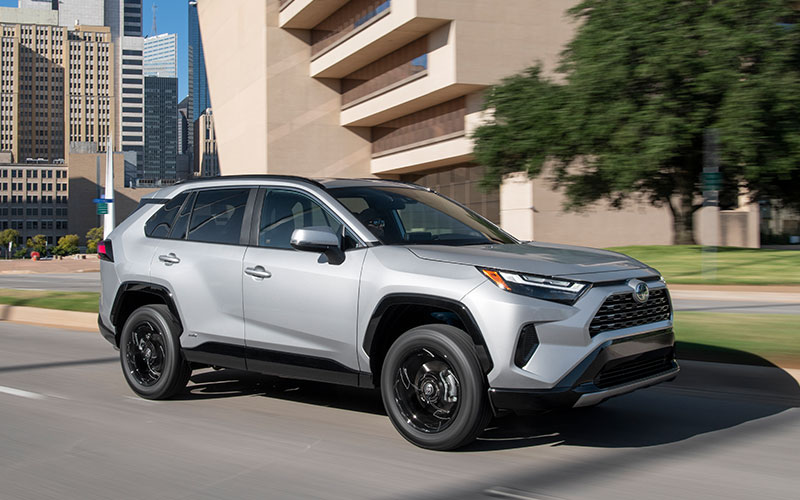
Certainly, a main consideration for anyone evaluating a hybrid is fuel economy. Though both the Honda and Toyota share similar specs and use idle-stop tech and active front grille shutters to improve efficiency, you’ll stretch a gallon of 87-octane further with the RAV4, particularly around town.
The Toyota RAV4 Hybrid is rated for 41 mpg in city driving and 38 on the highway. Compared to the Honda CRV Hybrids 40/35 mpg in the same conditions. Both are solid marks. but with the price of fuel these days, every MPG counts.
Comfort and Interior
As you might expect due to the exterior dimensions, the cabin measurements of these two SUVs read like carbon copies. The major difference is that Toyota gives the RAV4 Hybrid 38 cubic feet of storage space behind the back seat, to the CR-V’s 33 cubes. However, the CR-V has an extra two inches of rear legroom, so you’ll have to decide which metric is more important for your needs, but overall, it’s a wash.
Honda gives the CR-V dressier cabin duds than the RAV4, as all three hybrid models are trimmed with faux-wood, chromed plastic. and brushed satin bits. The EX-L and Touring CR-Vs feature leather upholstery, something you won’t find in the RAV4. Another nice aspect to the Honda is standard Active Noise Cancellation that helps to suppress ambient noise, including engine drone.
Dual-zone automatic climate is standard in both SUVs with features like heated front seats, hands-free tailgate access, and a sunroof widely available. However, Toyota again noses ahead by offering options like ventilated front seats, heated rear seats, and a panoramic glass roof – none of which can be found with the CR-V.
Trims and Features

Toyota really moves ahead in this CR-V Hybrid vs. RAV4 Hybrid comparison when you look over the trim structure. Honda keeps things simple by offering just three models ranging from the base EX that starts at $33,255 and runs up to a tops-spec $39,045 Touring model.
Toyota doubles the offerings with six models and, crucially, opens the pricing at $30,790 for a RAV4 LE Hybrid. So, for $2,500 less than the cheapest CR-V Hybrid, you can get your hands on Toyota’s hybrid powertrain and set to work on your hypermiling skills.
This base RAV4 Hybrid comes with LED headlamps, 17-inch alloy wheels and a 7-inch infotainment touchscreen embedded with Apple CarPlay and Android Auto tech. As you climb the Toyota trim totem pole, features like heated side mirrors, smart key tech, and Sof-Tex faux leather upholstery are unlocked.

The top two RAV4 models, sporty XSE and fancy Limited boast a 9-inch infotainment display, while the Limited comes with an 11-speaker JBL stereo, climatized front seats, and the option to tack on a digital rearview mirror – none of which are to be found on the CR-V. Check out this review of the 2022 Toyota RAV4 for a full rundown on everything it has to offer.
Base Honda CR-V Hybrids are also nicely equipped with 18-inch wheels, a moonroof, LED headlights, and the slick Smart Entry with Walk-Away Auto Lock system. Standard amenities include heated front seats, Apple and Android smartphone mirroring, and a 7-inch touchscreen display.
It’s worth noting that this is the largest screen available in the Honda. Midpack EX-L models bring a leather-lined cabin, auto-dimming rearview mirror, and ambient cabin lighting, while the highest-end Touring trim adds a 9-speaker audio system, wireless phone charger, and parking sensors for both ends. We dive deeper on the 2022 Honda CR-V here.
Conclusions
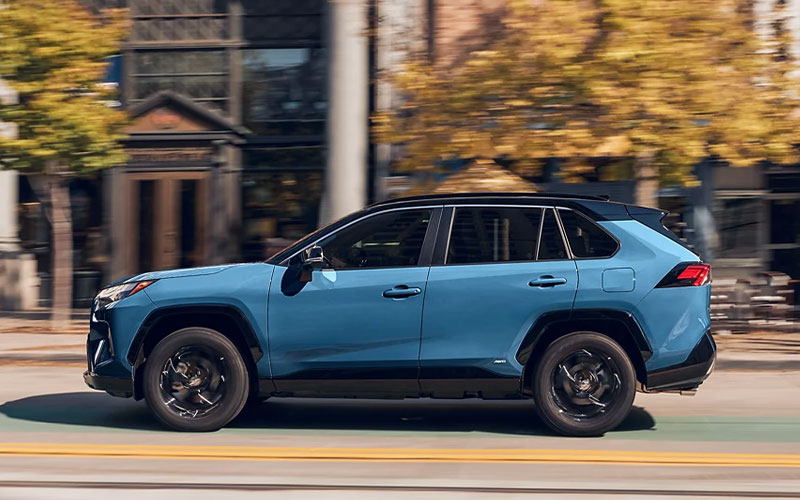
There’s a lot to like from both SUVS in this 2022 CR-V Hybrid vs. RAV4 Hybrid review, like excellent gas mileage, deep rosters of active safety systems, and normalized styling – no nerd mobiles here. This is all to say a buyer will be happy with either vehicle.
However, there’s no denying the RAV4 Hybrid brings a whole lot more to the table – improved fuel efficiency, lower entry pricing, bigger digital screens plus a stronger warranty. It is more than enough to win this comparison and should earn it a spot on this list of Best Hybrid SUVs.


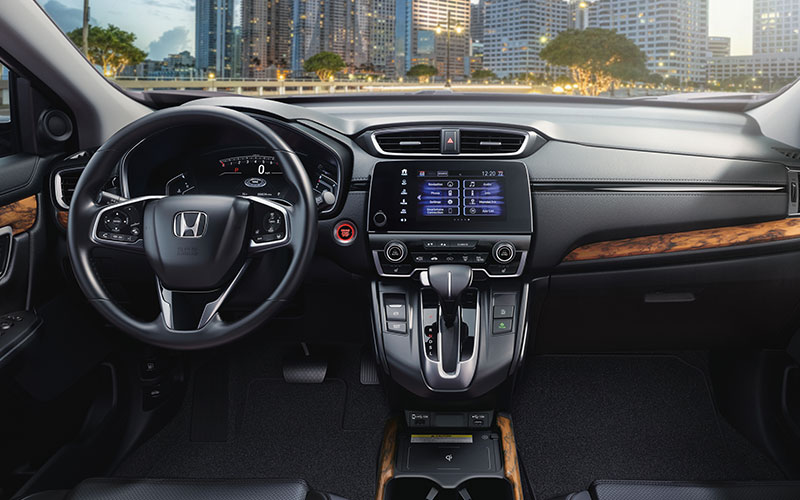
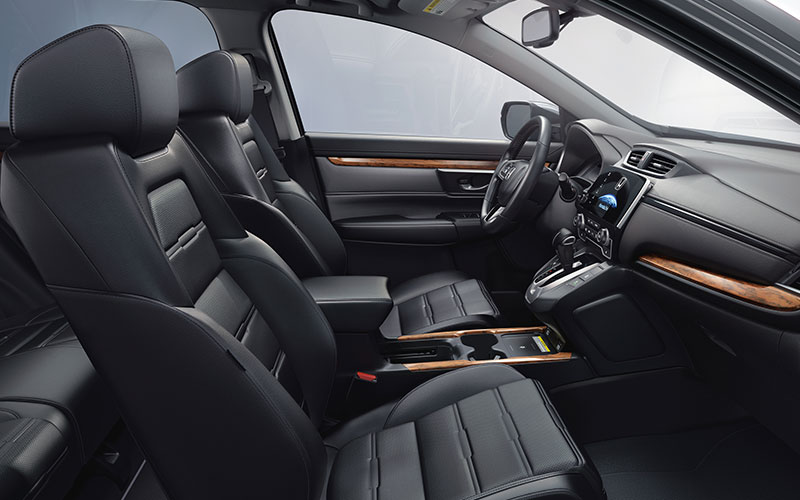
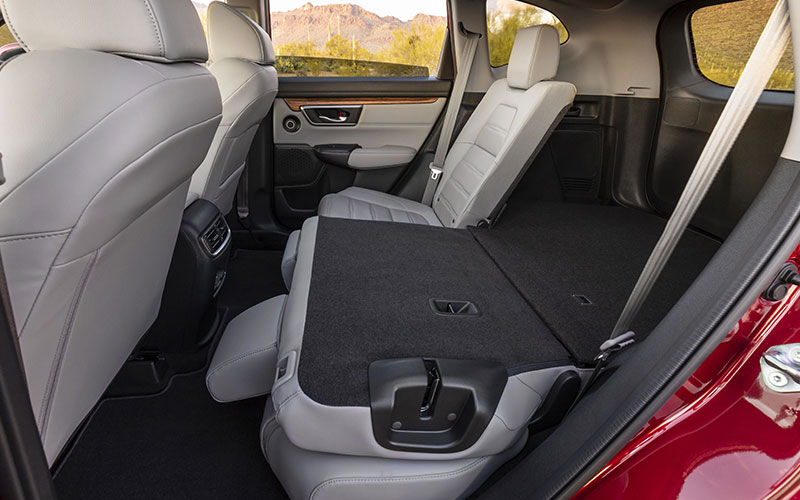
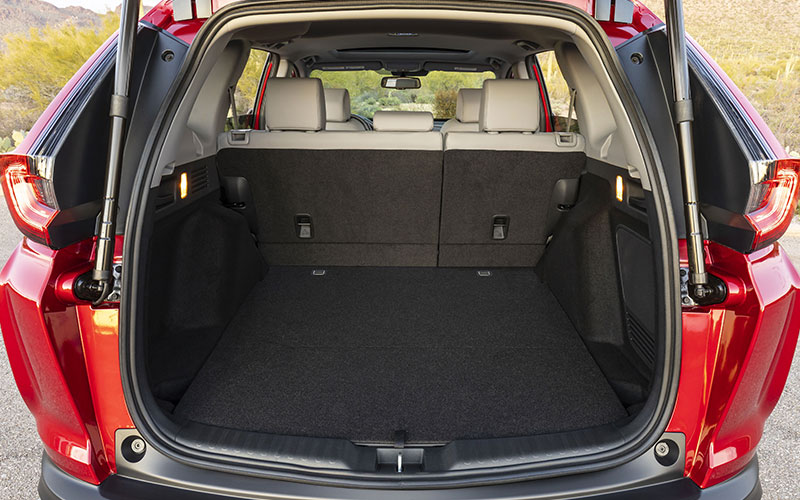
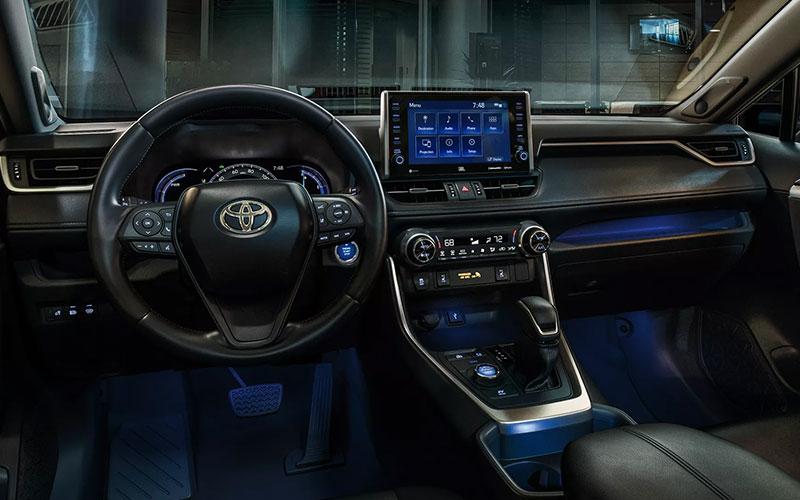
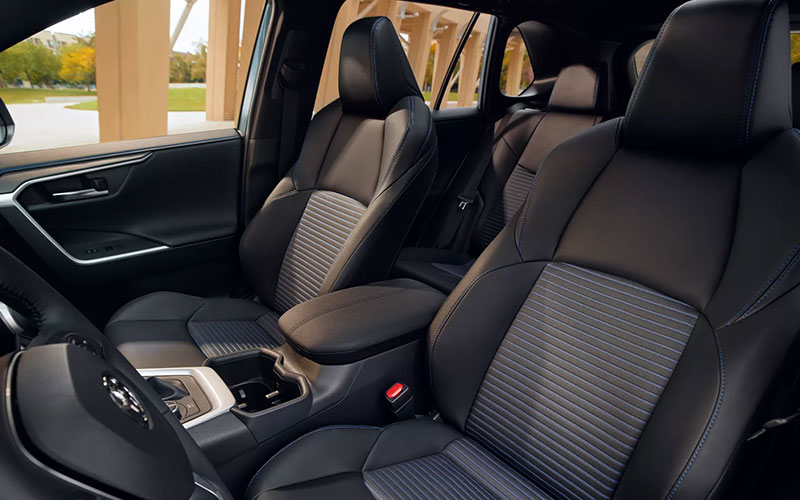
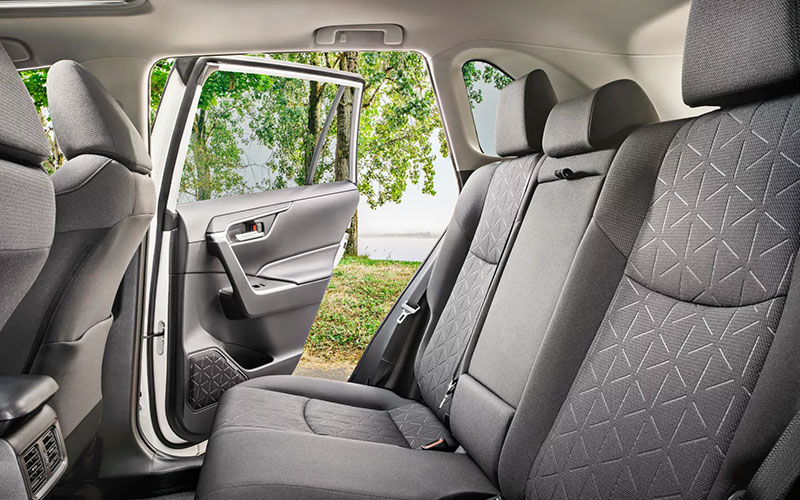
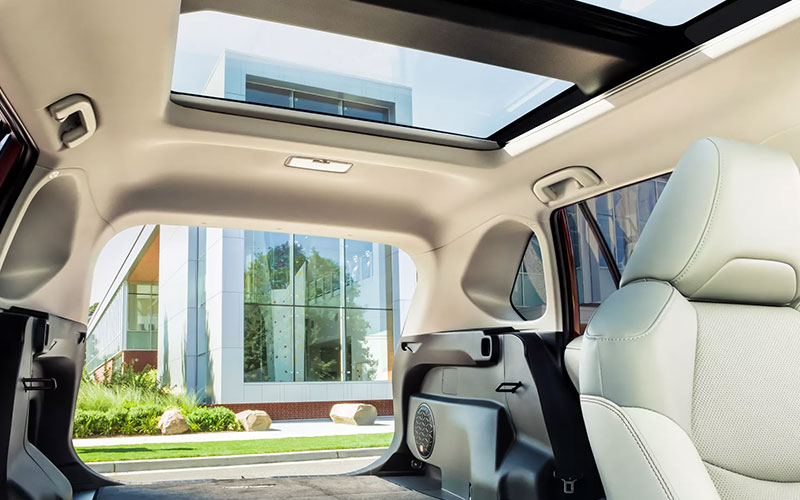

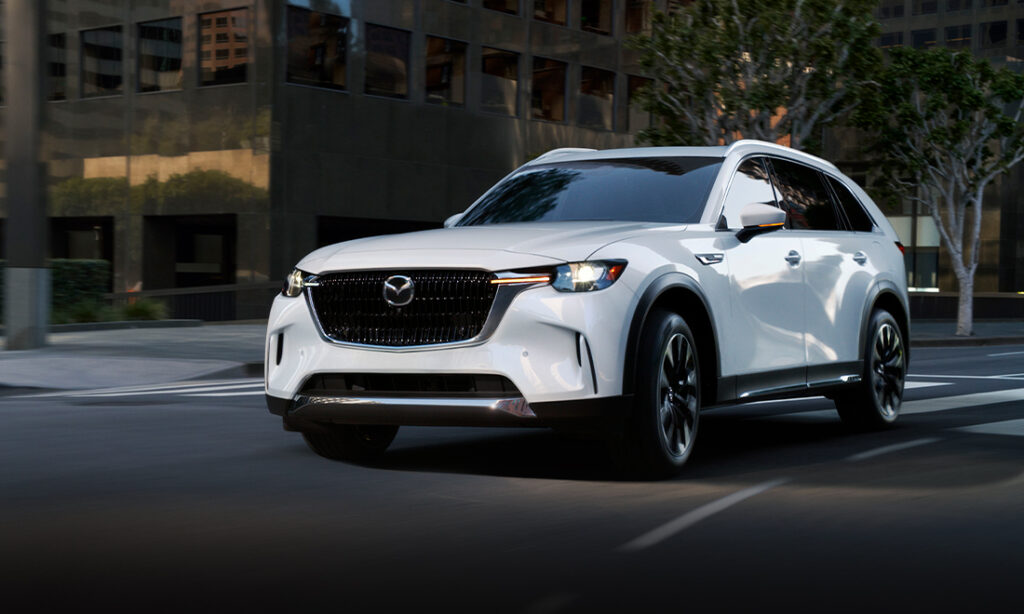
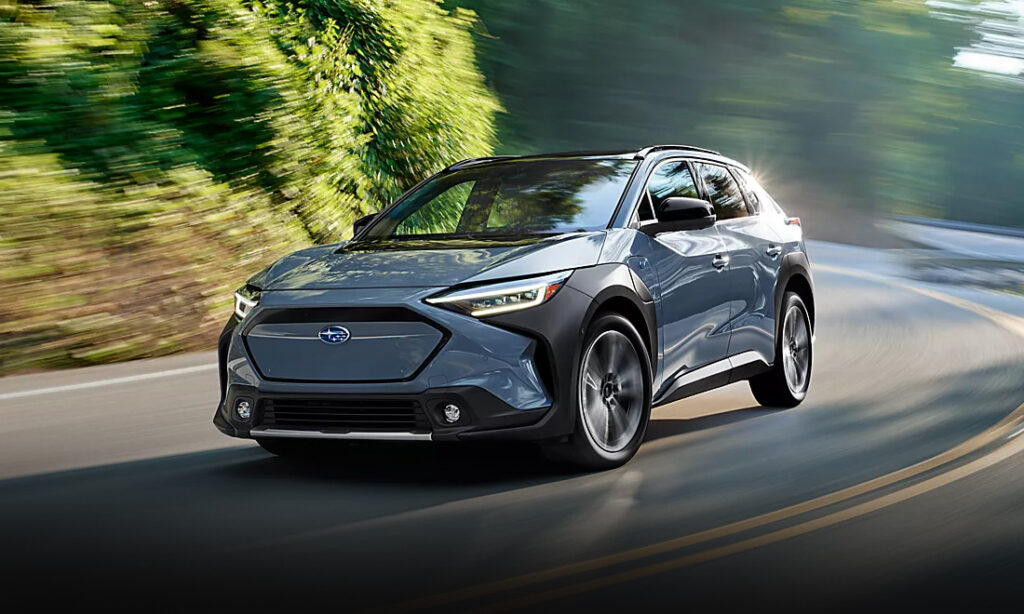





I’ve owned the CR-V 2018 Honda Touring (turbo) and now the 2021 Hybrid EX-L. Great cars in general but w plenty of DAHH quirks once you get used to each other. Example, the Honda radar sensors take a vacation at least 25% of the time with inclement snow, slush or heavy rains in the Upstate NY weather carnival. Also, while plenty of engine pep around town, the hybrid seems to hope the 18 wheeler that needs to be passed will slow down…so be extra careful in the highway leap frog games. Cabin noise even with so called cancellation technology, is hard for me, who’s deaf in one ear and can’t hear out the other, to tolerate. Anyway, my final choice was to pick a car with solid overall specs yet refined and pleasing in appearance both inside and out rather Rambo ugly on both counts. Love my Honda hybrid!